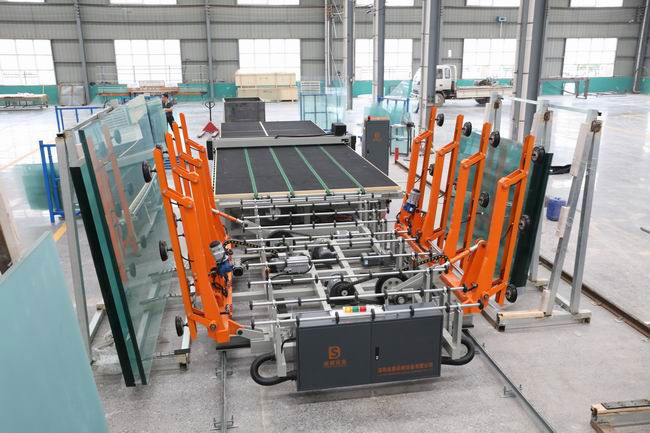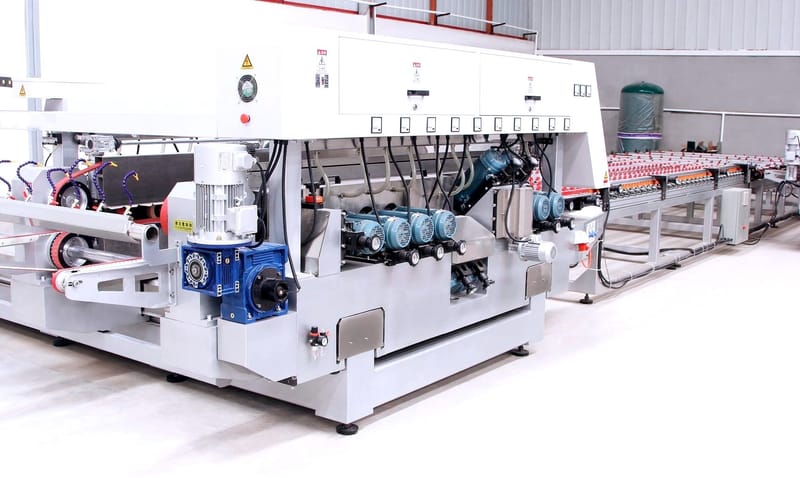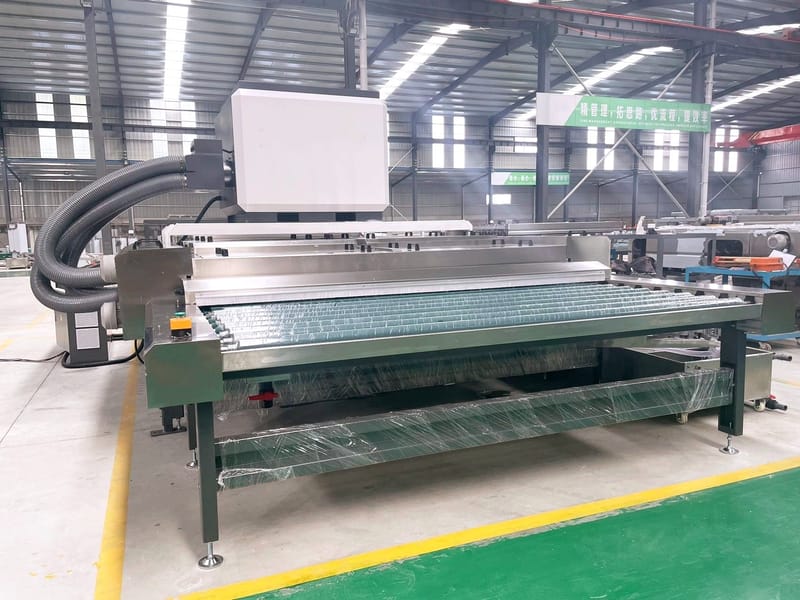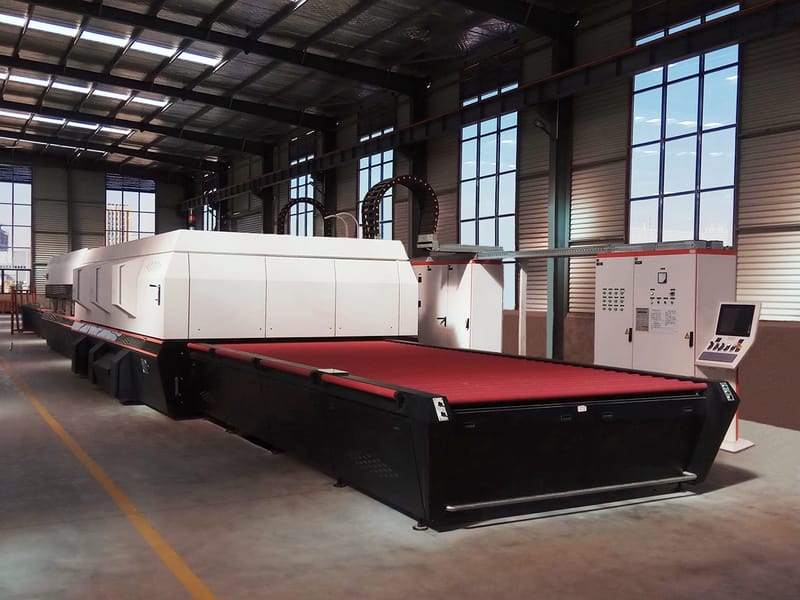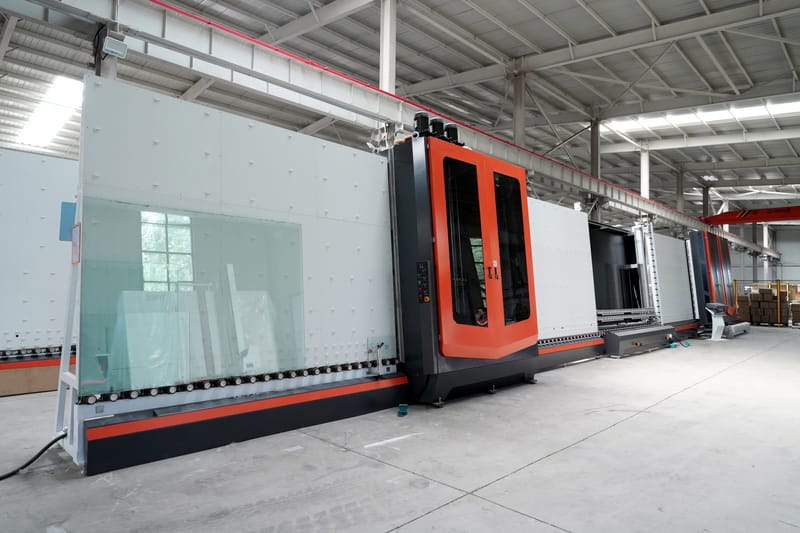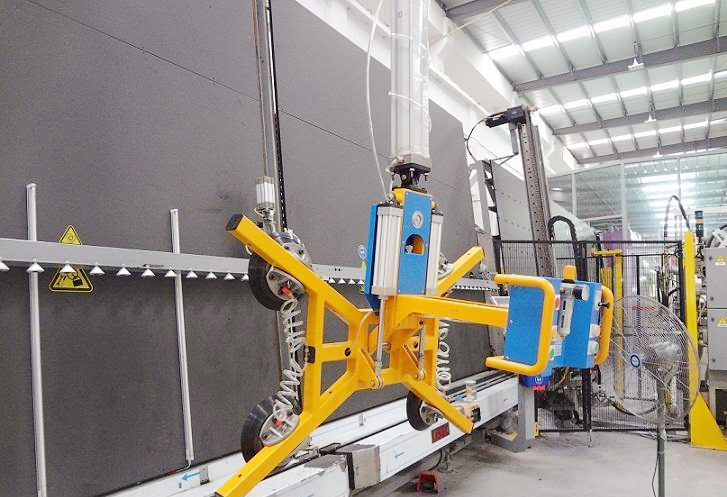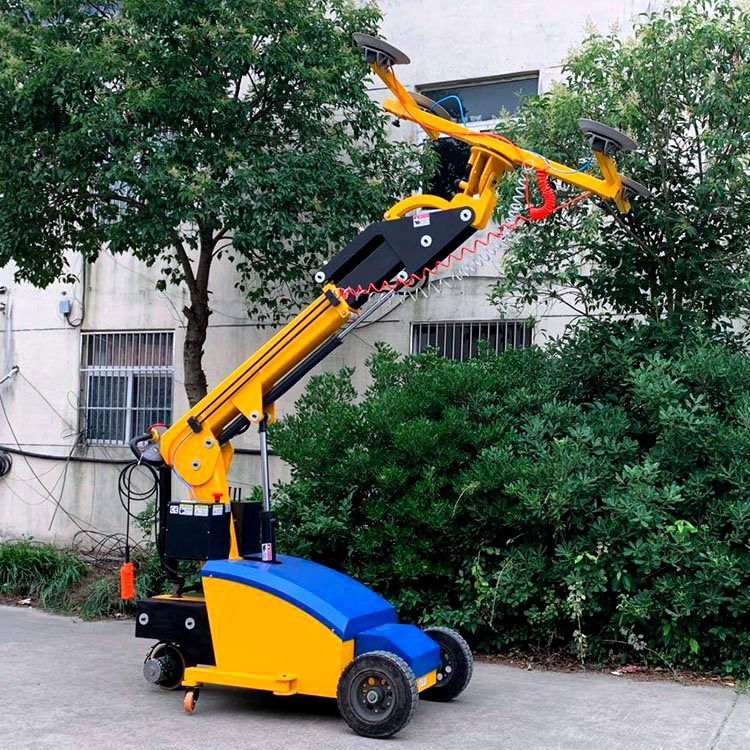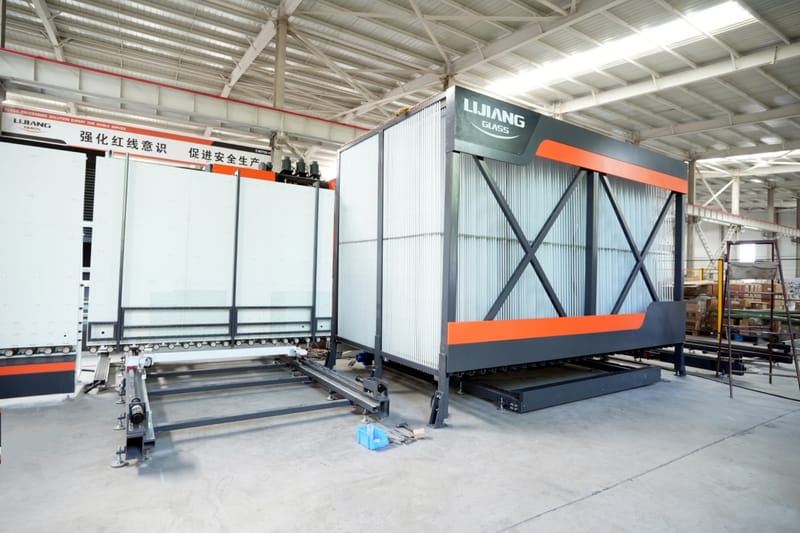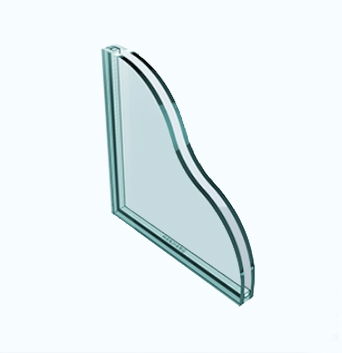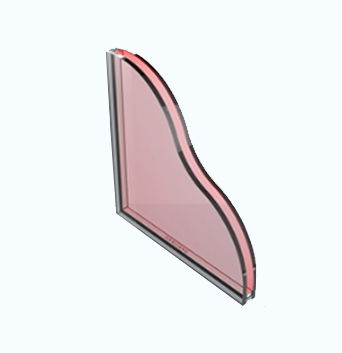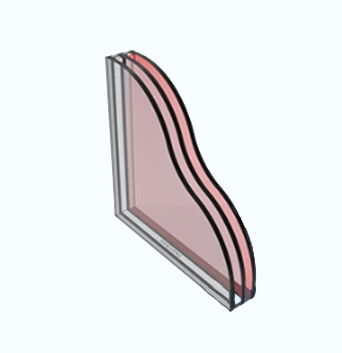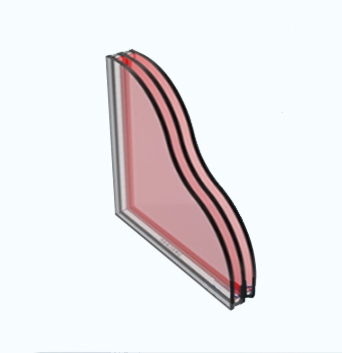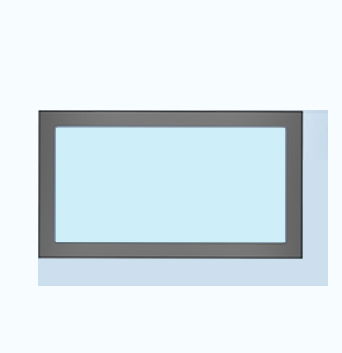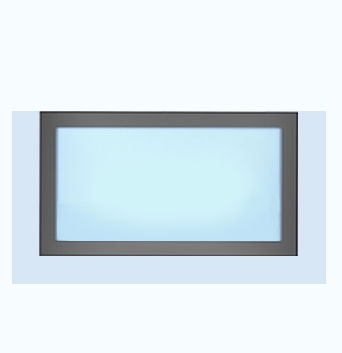Benutzerhandbuch
All types of insulating glass machines for beginners&professionals.
Pick your first insulated glass machines for automation factory glass industry manufacturing.
Tempered insulating glass is a glass product that uses an aluminum frame or extruder strip injected with desiccant to separate the glass between two or more pieces of tempered glass, and is sealed on all sides by sealing to keep argon-gas filling in the middle cavity at all times.
- Principle of tempered homogenization treatment
- Process of tempered homogenization treatment
1. Heating stage
The heating stage starts at the ambient temperature of all glasses and ends when the surface temperature of the last glass reaches 280℃. The temperature in the furnace may exceed 310℃, but the temperature of the glass surface cannot exceed 320℃. The time when the glass surface temperature exceeds 300℃ should be shortened as much as possible.
2. Insulation stage
The insulation stage starts when the surface temperature of all glasses reaches 280℃, and the insulation time is at least 2h. During the entire insulation stage, the temperature of the glass surface should be kept within the range of (290±10)℃.
3. Cooling stage
When the glass that finally reaches 280℃ has been kept warm for 2h, the cooling stage begins, during which the glass temperature drops to the ambient temperature. When the temperature in the furnace drops to 70℃, the cooling stage is considered to be terminated.
How to pick the appropriate tempered glass production equipment?
Tempered glass production equipment mainly includes a glass loading and transport equipment, glass cutting machine, glass edge grinding machine, glass washing and drying machine, double-chamber tempering furnace and so on. However, How to pick the appropriate tempered glass production equipment? What kinds of suggestions LIJIANG Glass could offer you, Maybe that is the key-point you got.
Glasplattenladeeinrichtung
Glasschneidemaschine
Die Schneidbrücke besteht aus starrem und verdrehsicherem Metall und wird von einem Servomotor über ein präzises Getriebe angetrieben. Die Bewegungen des Schneidkopfes umfassen X/Y/Z und Kopfdrehung. Höhe und Druck des Schneidkopfes sollten automatisch entsprechend der Glassituation angepasst werden, und das Schneidöl wird automatisch in das Schneidrad eingespritzt.
Der Filmentfernungskopf und der Schneidkopf teilen sich einen Brückenrahmen. Das Filmentfernungsrad wird von einem Motor angetrieben und verfügt über eine Filmentfernungs- und Staubentfernungsvorrichtung. Die Höhe des Filmentfernungsrads kann automatisch entsprechend der Größe des Schleifrads und der Dicke des Glases eingestellt werden, und der Filmentfernungsdruck kann automatisch eingestellt werden. Die Schneidemaschine kann die ursprüngliche Größe und Dicke des Glases automatisch erkennen und seine Position genau identifizieren.
Glaskantenschleifmaschine
Glaswasch- und Trockenmaschine
1. Conveying system
The conveying system adopts rubber roller conveying.
2. Inlet segment
The inlet segment is an independent frame with a pre-rinsing part on it, protective covers on both sides of the inlet segment (the protective covers are carbon steel protective covers, painted), and a water accumulation tray on the inlet segment to ensure that the rubber roller at the inlet end is immersed in water for 10 mm to achieve the self-cleaning effect of the rubber roller.
3. Washing segment
The cleaning segment has four sets of brushes, and the water sprayed from the nozzle can form a fan shape. The cleaning part includes the pre-rinsing part, which uses a water pipe with a flat nozzle.
4. Air-drying segment
The air-drying segment has three pairs of air knives, each pair of air knives has upper and lower air knives, and the air knives are made of stainless steel. The height of each air knife can be adjusted manually separately, and there are steel plates and sound insulation cotton inside the air-drying segment for sound insulation.
5. Outlet segment
The outlet segment is an independent frame with three sets of inspection lights on it, and protective covers on both sides of the outlet segment, which are carbon steel protective covers, painted.
6. Wind system
The fan is installed in a soundproof box, and the soundproof box is surrounded by soundproof cotton and porous plates, which can achieve the effect of sound insulation. The soundproof cotton is protected by porous plates to prevent dust from contaminating the fan.
7. Water system
The water tank is installed under the shelf, and a water tank in the pre-rinsing part can use clean tap water. The cleaning section is equipped with an integral water tank with casters and handles, which can be freely dragged out for cleaning.
8. Electrical control system
The electrical control system includes a control cabinet installed near the outlet of the equipment.
Doppelkammer-Temperglasofen
① The glass is evenly arranged in the upper section;
② It is sent to the heating furnace for uniform heating, and then sent to the wind grid section for rapid cooling after heating to complete the tempering;
③ It is transported to the lower section and the lower piece is packed manually. The double-chamber tempering furnace is mainly composed of a film-placing table, a preheating furnace, a heating furnace, a cooling device, a film-unloading table, a wind duct system, and an electrical control system.
1. Sheet placement table
The original glass is placed on the sheet placement table in a certain way. After pressing the start button, the roller starts to move forward with the glass. After triggering the photoelectric switch near the transition roller, the roller stops rotating and the glass waits for the next command here.
2. Preheating furnace
The preheating furnace adopts upper forced pure convection technology. When the glass enters the preheating furnace, the door of the preheating furnace is opened, and the sheet placement table conveying roller and the ceramic roller in the preheating furnace rotate synchronously to send the glass into the preheating furnace. Then, the preheating furnace closes the furnace door. The glass is driven by the roller in the preheating furnace and reciprocates within the set range. The glass is heated quickly and evenly, and the heating quality is better than other methods. At the same time, it can ensure that the ceramic roller does not bend or deform, extending the service life of the preheating furnace.
3. Heating furnace
The performance and configuration of the heating furnace are the same as those of the preheating furnace, that is, the upper forced pure convection technology.
4. Cooling device
The cooling device is composed of a cooling air grille and a conveying roller.
5. Lower sheet table
The lower sheet table is a horizontal roller section with heat-resistant imitation rope wrapped on the surface.
6. Air duct system
The air duct system is mainly composed of fans, air supply pipes, and air collecting boxes.
7. Electrical control system
The electrical control system mainly includes the host computer, PLC system, variable frequency drive system, fan inverter system, and heating control system.
How to produce the insulating glass units by Automatic Solution
1. Bending of aluminum spacers: First, cut and bend the aluminum spacers into a shape of appropriate size according to the glass processing size requirements. This step is usually completed by automated bending equipment to improve production efficiency and reduce manual errors. At the same time, laser coding can be performed according to the OA work order system to identify the model.
2. Filling of aluminum spacers: After the aluminum spacers are bent, the aluminum spacers are filled with adsorbents. Generally, a 3A molecular sieve is used as the adsorbent for filling.
3. Low-E film layer detection: The film layer is detected through the Low-E Glass photoelectric detection switch in the feeding section to effectively prevent the Low-E Glass from being placed upside down.
4. Washing and Drying: The cut glass blocks will go through the cleaning process to remove dirt, grease, and other impurities on the surface to ensure that the next process can proceed smoothly. Glass washing usually uses an efficient washing and drying machine, which can complete the cleaning of large quantities of glass in a shorter time.
5. Inspection: The washed glass blocks need to undergo strict quality inspection to ensure that they meet the standards and requirements. The inspection process is usually carried out by manual visual observation, which can detect the flatness, thickness, surface defects, and whether the glass is clean.
6. Assembly: The glass blocks that have passed the inspection will be sent to the insulating glass plate pressing segment for assembly. The insulating glass machine will automatically place two or more pieces of glass at the required interval and inflate them.
7. Sealing: The assembled glass undergoes a sealing process to ensure that the gas or air in the insulated layer does not leak. Sealing generally uses high-efficiency sealants, such as hot melt sealant or structural sealant, and fully automatic sealing lines for sealant application.
8. Inspection: Finally, the insulating glass is inspected again to ensure that the quality and performance meet the requirements. For example, glass appearance inspection, sealing test, thermal performance test, etc. can be carried out.
Know More
- Assemble the Aluminum Spacer Strips
- Apply the Butyl Extruder Coating
- Check Frame Sealing and Glass Plate Pressing
- Automatic Sealing
Automatic Insulating Glass Processing Solution
In case you are looking for a trusted manufacturer & brand to purchase your next automatic insulating glass processing solution at an affordable prices & high-quality components, LIJIANG Glass can be an excellent place to rely your trust on, and meet the above insulating glass produce requirements.
Das intelligente Glaslager- und -sortiersystem von LIJIANG Glass kann an die meisten ERP-Softwares auf dem Markt angeschlossen werden. Es kann offline mit automatischem Laden und Entladen von Folien verwendet oder an eine Isolierglas-Produktionslinie angeschlossen werden, um eine automatisierte Verbindung herzustellen. Das Gerät kann die Glasgröße automatisch erkennen oder den Code direkt lesen, der die Größe des Glases identifiziert und entsprechend der Größe gepaart und sortiert werden kann. Es kann Doppelglas, Dreifachglas, Vierfachglas, Verbundglas, Low-E-Glas, Milchglas, beschichtetes Glas und andere Gläser paaren und unterscheiden. Es kann je nach Kunde in Stücke aufgeteilt werden. Es kann entsprechend der Prozesskarte in Stücke aufgeteilt werden, und die Prozesskarte kann gedruckt werden, nachdem die Stücke platziert wurden.
Erfahren Sie mehr DetailsDie Produktionslinie für Isolierglas mit Doppelfüllung und Doppelplattenpressen von LIJIANG Glass umfasst einen Zuführabschnitt, einen Wasch- und Trockenabschnitt, einen Wasch- und Entladeabschnitt, einen Lagerabschnitt, einen Inspektions- und Rahmenabschnitt, einen Zuführabschnitt für Flachpressen, einen aufblasbaren Plattenpressabschnitt und einen Flachpressen-Entladeabschnitt. Der aufblasbare Plattenpressabschnitt umfasst eine vordere bewegliche Platte, eine hintere feste Platte, linke und rechte Dichtungsplatten, ein Förderband und einen Aufblasmechanismus. Der aufblasbare Plattenpressabschnitt kann bei Bedarf zwei Glasstücke mit einer Länge von weniger als 3 Metern gleichzeitig aufblasen und pressen oder eine extra große Glasplatte pressen.
Erfahren Sie mehr DetailsDie von LIJIANG Glass hergestellte Butyl-Extruder-Beschichtungsmaschine für Isolierglas kann den Abstand zwischen den beiden Beschichtungsköpfen schnell anpassen, um sich an unterschiedliche Spezifikationen von Aluminium-Abstandshalterstreifen anzupassen. Sie umfasst einen Rahmen und zwei unabhängige Dichtungssysteme. Jedes Dichtungssystem umfasst einen Dichtungsextrusionszylinder und der Dichtungskopf ist relativ zum Dichtungsextrusionszylinder fixiert. Die beiden Dichtungsköpfe sind mit einem bestimmten Abstand nebeneinander angeordnet, um den Aluminium-Abstandshalter aufzunehmen und eine Butyl-Extruderbeschichtung darauf aufzutragen. Der Rahmen ist mit einer Bewegungsmöglichkeit für eines der Beschichtungssysteme versehen. Die Führungsschiene wird verwendet, um den Abstand zwischen den beiden Beschichtungsköpfen anzupassen, und es gibt auch eine Bewegungsvorrichtung, die das Beschichtungssystem antreibt, um sich entlang der Führungsschiene zu bewegen.
Erfahren Sie mehr DetailsAngesichts der großen Anzahl beschichteter Gläser wie Low-E-beschichtetem Glas und Sonnenschutzfolie, die derzeit auf dem Markt für Isolierglasverarbeitung verwendet werden, müssen verschiedene Folien rund um das butylbeschichtete Glas entfernt werden, da sonst die Lebensdauer des Isolierglases beeinträchtigt wird. Im Allgemeinen ist die mechanische Entfernung von Glasoberflächenfolien die erste Wahl. Die empfohlenen Parameter für das Folienentfernungsrad der automatischen Low-E-Glasfolienentfernungs- und -entfernungsmaschine von LIJIANG Glass sind Luftdruck 0,8 MPa – 1,2 MPa, Rotationsgeschwindigkeit 1800 – 1900 U/min; das Schleifrad besteht aus Schmirgel oder Edelstahldraht unter 0,15 µ (100 Maschen). Nach der Folienentfernung bleiben keine Spuren auf der Oberfläche zurück. Die Entwicklungsrichtung besteht darin, Schleifräder entsprechend verschiedener Foliensysteme einzurichten.
Erfahren Sie mehr DetailsDie Roboterlinie für die Versiegelung von Isolierglas von LIJIANG Glass verwendet ein großes Touchscreen-Mensch-Maschine-Schnittstellen-Steuerungssystem, um die automatische Positionierung von Aluminium-Trennrahmen, das automatische Anheben und Absenken von Pressen, Fördern, Versiegelungsbeschichtung, automatisches Timing-Heizen und andere Funktionen zu realisieren. Das Gerät verwendet eine fortschrittliche Gas-Flüssigkeits-Boosting-Technologie, um den Systemdruck stabiler und energiesparender zu machen. Das System ist mit einem Alarmsystem für den Fall einer nachlassenden Versiegelung sowie einer Dual-Gruppen- und Dual-Versiegelungs-Versorgungskonfiguration ausgestattet. Die Produktion wird während des Austauschs der Versiegelung nicht verzögert. Der Versiegelungskopf ist im Bereich von 6–20 mm einstellbar und kann nach oben und unten feinjustiert werden.
Erfahren Sie mehr DetailsDie hochpräzise Biegemaschine für Isolierglas-Aluminiumstreifen von LIJIANG Glass umfasst einen Übertragungsmechanismus und einen Biegemechanismus. Der Übertragungsmechanismus umfasst ein Antriebsrad, zwei feste Räder und zwei Übertragungsketten; die beiden festen Räder werden über eine dynamisch verbundene Übertragungskette in horizontaler Richtung angetrieben; das Antriebsrad ist über eine weitere Übertragungskette antriebsmäßig mit einem der festen Räder verbunden; der Biegemechanismus umfasst ein drehbares Druckrad und eine Höhenverstellvorrichtung; das Druckrad und die beiden festen Räder befinden sich auf derselben vertikalen Ebene und befinden sich über der Mitte der beiden festen Räder; die Höhenverstellvorrichtung ist über dem Druckrad installiert und verfügt über eine Schraubenstruktur, um die Höhe des Druckrads mit hoher Präzision einzustellen.
Erfahren Sie mehr DetailsDie Isolierglas-Molekularsieb-Füllmaschine von LIJIANG Glass hat einen Stützrahmen, der fest in der Mitte einer Seite des Hauptkörpers installiert ist. Eine Füllpistole ist symmetrisch über dem Stützrahmen befestigt. Ein fester Sitz ist an der Oberseite und in der Mitte des Stützrahmens angeschweißt. Eine feste Basis ist fest in der Mitte des vorderen Endes der festen Basis installiert. Der Befestigungsrahmen hat Befestigungsschlitze in der Mitte beider Seiten des Befestigungsrahmens. Eine L-förmige Schubstange ist innerhalb des Befestigungsschlitzes beweglich. Eine bewegliche Druckplatte ist auf einer Seite der Außenfläche der L-förmigen Schubstange installiert. Diese Ausrüstung verhindert, dass die Füllpistole den Aluminium-Abstandshalter während des Füllens auf und ab drückt, verbessert die Gesamtstabilität des Aluminium-Abstandshalters während des Füllens und verbessert dadurch die Gesamtfülleffizienz des Aluminium-Abstandshalters.
Erfahren Sie mehr DetailsDieser rotierende Dichtungstisch von LIJIANG Glass verfügt über eine Vorwärts- und Rückwärtsdrehstruktur und kann frei bedient werden. Die gesamte Anlage besteht aus geschweißten Vierkantrohren mit hoher Festigkeit und verformt sich nicht leicht. Die Hebe-, Senk- und Drehfußventile sind einzeln selbstsperrend gesteuert, um Fehlbedienungen zu vermeiden. Isolierglas mit unterschiedlichen Spezifikationen kann flexibel und bequem bedient werden.
Erfahren Sie mehr DetailsDie Hauptpumpe des manuellen Zweikomponenten-Dichtungsapplikators von LIJIANG Glass wird reibungslos durch das Hydrauliksystem angetrieben. Das vollständig geschlossene Dichtmittelpfadsystem verhindert, dass das Härtemittel mit Luft in Kontakt kommt und fest wird. Die Zweikomponenten-Dosierstruktur wird stufenlos angepasst, um genaue Dosieranforderungen zu erfüllen. Es wird ein international beliebter statischer Kolbenmischer verwendet, der für eine gleichmäßigere Mischung sorgt.
Erfahren Sie mehr DetailsDer Gefrierschrank für Isolierglas-Versiegelungspistolen von LIJAING Glass umfasst eine Kastenschale, einen Niedertemperatur-Isoliertank, einen Hochtemperatur-Isoliertank, einen Kompressor und einen an der Schalenwand installierten Ventilator. Der Isoliertank ist über eine Rohrleitung mit dem Kompressor verbunden, und die Oberseite der Schale ist mit einem Deckel ausgestattet, um eine langfristige Temperaturstabilität der Versiegelungspistole zu gewährleisten.
Die Inertgas-Inflator-Ausrüstung von LIJIANG Glass wird verwendet, um Inertgas in das Isolierglas einzublasen und so die Wärmedämmung, Abdichtung, Schalldämmung, Energieeinsparung und andere Eigenschaften des Isolierglases zu verbessern. Sie verwendet einen aus den USA importierten Gasreinheitsanalysator und einen aus Japan importierten Gassensor, um die Stabilität des Inflator zu gewährleisten. Das benutzerfreundliche Design macht das Gerät schön und einfach zu bedienen. Es ist derzeit die fortschrittlichste aufblasbare Isolierglasausrüstung.
Erfahren Sie mehr DetailsDieses Gerät ist das Bindeglied zwischen der Butyl-Extruder-Beschichtungsmaschine für Isolierglas und der Isolierglas-Produktionslinie. Die LIJIANG Glass LJSK02-Förderanlage zum Aufhängen von Aluminiumrahmen für Isolierglas ist eine spezielle Anlage zum Lagern und Fördern des von der Butyl-Extruder-Beschichtungsmaschine mit Dichtungsmittel beschichteten Aluminiumrahmens während des Isolierglas-Herstellungsprozesses.
Erfahren Sie mehr Details10 Jahre?...
- The professional market analysis should be the first step.
- A feasibility report should be done with the labor cost, material cost, factory cost and consumptions, productivity, etc.
- Accurate company management structure and system design.
- Professional machinery plan and software setup.
- All the targets can be achieved, tracked, and monitored accurately if the above jobs are professionally done …
The louver is completely sealed inside the insulated glass louver, and the lifting and turning of the louver are controlled by the magnetic force outside the glass or a remote control. The structure is reasonable and simple, and the operation is convenient, which saves space and inconvenience, and completes the thermal insulation of the insulated glass and the sunshade of the louver. It can easily adjust the indoor light environment and is suitable for various energy-saving building exterior doors and windows. It meets our energy-saving and environmental protection requirements, and is also very fashionable and beautiful. The insulated glass louver glass mainly controls the loss of indoor heat energy to the outside by reducing heat energy and convection, and completes its insulation function with a lower heat transfer coefficient.
LIJIANG Glass Automatic Insulated Glass Louver Curtain machine is a new generation of products designed specifically for processing aluminum louvers. It is controlled by CNC technology. The length, hole spacing, and number of punching holes are input through the touch screen. It automatically completes functions such as arc pressing, punching, cutting, counting, and ladder threading, with a high degree of automation. There are 12.5, 15, 16, 25 and other specifications to choose from. It is the main equipment for producing louvers, hollow louver glass and louver partitions.
Features & Advantages:
- It can automatically feed, press arcs, punch holes, cut, and discharge materials according to parameters such as the length, number of holes, and hole spacing of the curtain piece, and has alarm and shutdown protection functions.
- It has the function of automatically threading the ladder rope, saving labor.
- PLC control, touch screen setting, easy adjustment, high precision.
Technical Parameters:
- Machine power: 1.5kw 220v 50hz
- Applicable curtain width: 12.5mm, 15mm, 16mm, 25mm
- Overall size: 3800mm*500mm*1400mm
- Weight: 300kgs
